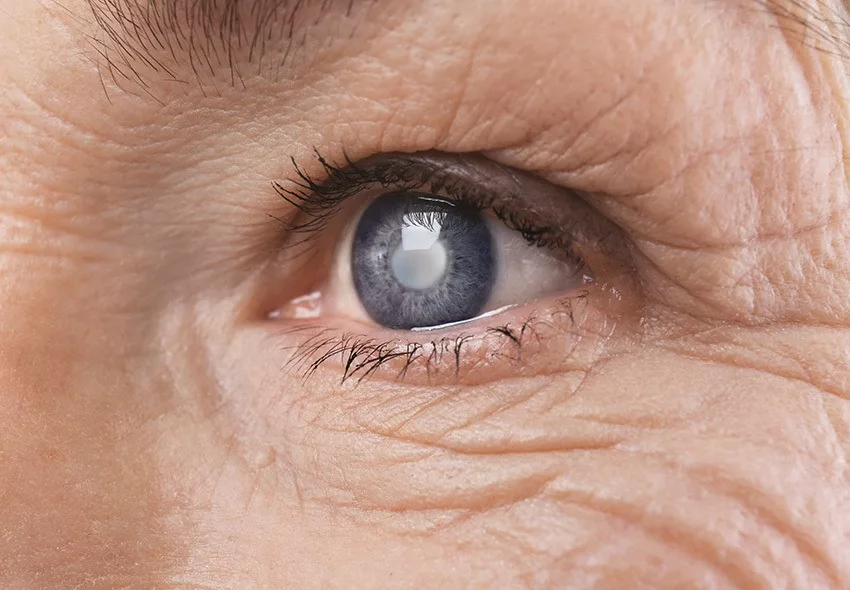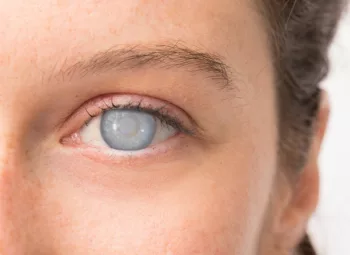
Hypermature Cataracts: Symptoms, Risks, and Treatments
Cataracts are the number one cause of vision loss in the US. By the age of 65, more than 90% of all Americans have a cataract, and about 50% of people aged 75-85 have some vision loss because of a cataract.
A cataract is a clouding of the lens of your eye, that makes it progressively difficult to see. Cataracts can affect both eyes but typically affect each eye differently.
The most common symptoms of cataracts can include:
- Blurry or cloudy vision
- Deteriorating night vision
- Difficulty reading, progressing to impossible
- Double (or multiple) vision
- Faded-looking colors
- Frequent eye prescription changes
- Halos or glares around bright objects
- Small, blurred patches in your vision
- Spots or dots in your vision
- Vision quality that worsens in dim light, and sometimes with very bright light
During the earliest stages of cataract development, it is common for patients to not experience symptoms. In fact, even within the first few years of cataract development, some patients experience no visual symptoms at all.
Diagnosing and treating eye conditions like cataracts is imperative to avoid the possibility of permanent, irreversible vision loss. This is why ophthalmologists highly encourage patients over the age of 40 to receive comprehensive eye exams every year.
The longer a cataract goes untreated, the worse it can affect vision. Eventually, an untreated cataract will become a hypermature cataract.
What are Hypermature Cataracts?
A hypermature cataract is one that has been left untreated and has grown dense, hard, and pearly white. Hypermature cataracts are a challenge to remove but will eventually cause complete loss of vision if left untreated.
The Four Stages of Cataract Development:
Early – The first stage of cataract development might include blurring vision, difficulty changing focus, sensitivity to glare, and a feeling of eye strain.
Immature – In the second stage, the lens begins to look slightly cloudy and you may need to turn on more lights to read, or new glasses with anti-glare lenses.
Mature – In the third stage, eyes may begin to appear milky or amber in color as the cataract grows to cover more of the eye lens and severely compromises your vision.
Hypermature – The fourth stage is the most severe. By this stage of development, the cataract is very dense and significantly impairs vision. It can still be removed, but the surgery is more difficult at this stage.
Signs and Symptoms of Hypermature Cataracts
Cataract development will eventually begin to decrease your vision making it hard to read, drive, see at night, and even interfere with your ability to recognize people’s facial expressions.
The severity of symptoms can differ from person to person and cataracts typically develop slowly. When cataracts enter stage four of development and become hypermature they can cause inflammation and increased pressure within the eye.
This can lead to patients developing additional eye conditions and an increased risk of blindness, among other things.
Risks of Hypermature Cataracts
A hypermature cataract can cause additional eye conditions to develop such as glaucoma. If left untreated both degenerative eye conditions can cause complete vision loss.
Glaucoma
Glaucoma is a condition that damages the optic nerve fibers responsible for carrying visual information from your eye to your brain. This damage is a result of a build-up of pressure within your eye. Glaucoma can progressively decrease your vision quality, and without treatment, it can destroy your optic nerve completely resulting in blindness.
Can Hypermature Cataracts be Removed?
Surgery is the only permanent treatment for cataracts – there are no medications or corrective eyewear that can completely compensate for its effects. Thankfully with advances in laser eye surgery, having a hypermature cataract surgically removed can significantly improve your vision quality.
Laser Cataract Surgery
Laser Cataract Surgery is a minimally invasive and painless procedure. At NeoVision, we are equipped with the most advanced laser-assisted technology including the LENSX® Laser System. This innovative femtosecond laser is designed specifically to permanently remove cataracts.
The entire procedure only takes about 15 minutes, and while everyone’s recovery process will be different, many patients experience immediate improvements in their vision quality.
During the procedure, the cataract and affected tissue are removed and the lens is then replaced with an Intraocular lens (IOL) implant.
Intraocular Lens Implants
An Intraocular Lens Implant (IOL) is an artificial lens made of extremely thin silicon that is implanted in place of your natural lens during cataract surgery. IOLs come in a variety of types to provide different ranges of vision correction after cataract surgery.
With IOL implants, we are able to not only treat cataracts but also restore other vision issues such as myopia (nearsightedness), hyperopia (farsightedness), and presbyopia (age-related farsightedness). So you may never need reading glasses again!
Contact NeoVision Eye Center to Learn More About Laser Cataract Surgery
Dr. Tandon is an expert cataract surgeon who has over two decades of experience as an ophthalmologist and has performed thousands of successful eye procedures. If you’re concerned about developing cataracts or have questions about previous surgery, please contact the experts at NeoVision Eye Center for a consultation.
Call today at 1-510-431-5511 or request a complimentary appointment online.






